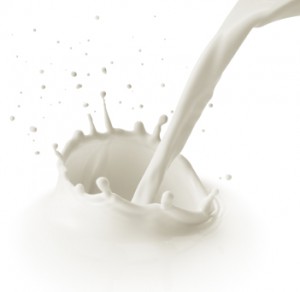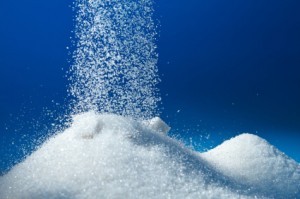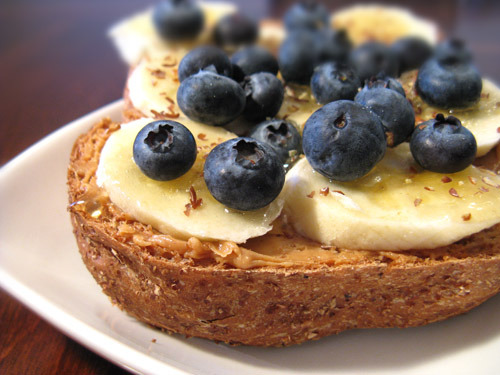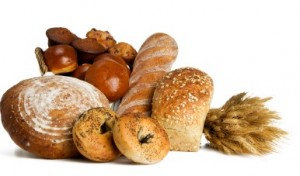Is it too late? No, according to the research.
Studying survival both before and after a cancer diagnosis can tell a lot.
Does a person’s diet after a diagnosis of cancer affect survival?
Absolutely.
Oddly enough, there have not been that many studies that show how diet affects cancer survival, after diagnosis, even though this is one of the lifestyle changes that can have the most dramatic effect on whether one lives or dies.
One extensive study examined diet after a breast cancer diagnosis and survival of women enrolled in the Nurses Health Study. In this study, almost 2,000 women who had developed breast cancer were followed for an average of 13 years.
A little more than half (1,200) of these women had breast cancer that had not metastasized (spread to other organs or the lymph nodes). Women in this group who ate the largest amounts of poultry, total protein, and omega-3 fatty acids (from oils found in grass fed meats and fish) had a significantly lower risk of death than women who ate the least amounts of these foods and nutrients. Women who ate more fiber, fish, and vegetables also had a lower risk of death than women who ate less of these food and nutrients.
And another important finding: the type of fats these women ate made a big difference. Those who ate hydrogenated oils had a higher rate of death.
For the 745 women whose cancer had metastasized, those who ate more protein and calcium had a lower rate of death.
Most importantly, in a study of 3,500 patients with breast cancer or ovarian cancer, the results show that a diet high in sugars and carbohydrates contributed to tumor growth and matastases, while a diet of healthy protein, animal products, healthy fats, vitamins, minerals and fiber had lower rates of cancer.
One’s diet after a cancer diagnosis is an area that is begging for more research.
Some foods and nutrients have been tied to as much as a 50% decrease in the risk of death from cancer.
While cancer rates climb, traditional medical science looks at more expensive, high tech treatments such as gene therapy, and more advanced cancer-killing drugs. But there is no magic cure.
Although it is far easier to prevent cancer than get rid of it, it can be reversed with diet, nutrition and lifestyle changes.
Think about this: Conventional cancer treatments kill cells, damage the immune system, and don’t go after the underlying cause.
Diet alone can make or break cancer treatment and is the most important of all therapies.
Having a knowledge of which foods feed cancer cells and which foods kill or starve cancer cells is absolutely vital to the healing process.
First and most importantly, any form of sugar, or food that raises the blood level of glucose, will feed cancer cells and should be the very first dietary change you make.
This includes any high glycemic foods that contain sucrose (regular cane or beet sugar), fructose (high fructose corn syrup, agave, honey, and naturally occurring sugars in fruits and fruit juice), or glucose (starchy foods such as potatoes, grain products like bread, crackers, pasta, cookies, granola bars, etc., and corn, popcorn).
Cancer cells feed on glucose in the body, and a low-glycemic diet will virtually starve out cancer cells. This is vital!
Sugar substitutes such as Splenda, Nutrasweet and Equal, refined flours, and trans fatty acids also wreak havoc on the body, and numerous studies have linked them to cancers. Even natural sweeteners such as honey and maple syrup (also sugars) should also be restricted while cancer remains active.
However, the herb stevia is a safe and natural sweetener, and it does not raise blood glucose levels or stimulate an insulin response. Stevia can usually be found in the supplement aisle of health food stores.
Avoid all processed foods and packaged foods—even if it came from the natural foods aisle. These foods contain artificial ingredients, preservatives, and other substances that strengthen cancer cells and interfere with the healing process.
Pasteurized dairy products should also be avoided, as they can contribute to allergies and asthma, and actually decrease immune function in the process. Many of these also contain sugar or high fructose corn syrup, and even if they don't, dairy products contain lactose, a type of sugar in milk. And unless they are 100% grass fed or organic, there are often hormones and additives in the milk or dairy products that speed up tumor growth.
The body’s ability to fight cancer is a function of the immune system, so anything that strengthens the immune system helps it kill cancer cells.
Some cancer-preventative diets recommend avoiding meat (mostly due to the hormones, toxins and antibiotics in conventional meat), but in most cases, the best choice is to eat good quality organic and grass fed meats, organic free range chicken, and wild-caught fish.
These meats are not only high in essential body-building proteins, B vitamins, iron, and zinc, but they also contain larger amounts of healing, cancer-fighting omega 3 fats , as well as Conjugated Linoleic Acid (CLA), a powerful cancer-fighting, immune-strengthening fatty acid.
One of the big concerns with a cancer diagnosis is metastasis when cancer cells spread to other parts of the body or lymph system. Metastasis is increased by a diet high in omega-6 fatty acids (canola oil, corn, soybean, sunflower, safflower or other vegetable oils).
However, omega 3 fatty acids, like those found in grass fed meats, wild caught fatty fish, flax seeds and walnuts actually slow down and inhibit cancer growth.
Omega 3 fatty acids also increase the body’s positive response to chemotherapy and help protect against chemotherapy’s toxic effects.
Healthy fats are essential.
CLA (conjugated linoleic acid) is such a potent cancer-fighting fat that studies even small amounts of CLA in the diet can reduce tumors by over 50 percent.
Studies show that even small amounts of CLA can block all three stages of cancer: 1) initiation, 2) growth, and 3) metastasis.
Where do you get CLA? The best source of natural CLA is from meat and dairy products of grass fed animals. Meat or milk from grass fed cattle contains 5 times more CLA than animals raised on grain in a feedlot. Simply switching from grain fed to grass fed products will increase your intake of vital CLA significantly, and eliminate the toxins and additives from conventionally raised meats as well.
Virtually all plant foods contain powerful nutrients and antioxidants that fight cancer, aid in the healing process, and help eliminate toxins from the body.
However, it is important to eat organic fresh fruits and vegetables if at all possible. Pesticides and toxins in commercially grown vegetables are not only toxic to the body, but can encourage the growth of cancer cells.
Certain vegetables have very potent anti-cancer properties including dark green lettuces like arugula, organic spinach, mache, and romaine lettuce, as well as parsley and watercress.
Cruciferous vegetables, a famiy of vegetables that includes broccoli, cauliflower, cabbage, bok choy, kale, kohlrabi, brussels sprouts, horseradish, mustard, capers, cress, rutabaga, arugula, and turnips, are extremely high in proven cancer-fighting phytochemicals.
Other healing and cancer-fighting plant foods include: edible seaweeds, berries, including: acai, goji berries, blueberries, raspberries, cherries, and red or purple grapes, garlic, ginger, turmeric, and green tea, among many others.
A New York based physician, Dr. Gonzalez, who has had incredible results treating so-called “untreatable cancers” with an alternative approach, and a specialized dietary regimen, recommends pancreatic enzymes in cancer treatment.
In a nutshell, his theory is that pancreatic enzymes are the body's main defense against cancer and are extremely useful as a cancer treatment.
Pancreatic enzymes have some amazing tumor-dissolving abilities.
Dr. Gonzalez, who is trained in immunology, uses special diets, aggressive supplementation with nutrients and enzymes, and detoxification methods to successfully fight cancer.
Effective healing not only requires a healthy, clean diet but also getting rid of accumulated toxins and metabolic wastes.
Other lifestyle factors that have a significant impact on successfully preventing and battling cancer include:
- Get out in the sun. Vitamin D from sunlight strengthens the immune system and is a powerful weapon in the cancer battle. Adequate exposure during the midday hours is the best way to obtain the restorative benefits of sunlight.
- Get some exercise. Regular exercise speeds up the elimination of toxins and is necessary to circulate oxygen in the body and to improve lymph function and drainage, while building immunity. You can achieve these therapeutic benefits with moderate exercise at 3-4 times a week.
- Keep a positive attitude! It reduces psychological stress and profoundly aids the healing process. Studies in cell biology show that a positive attitude actually affects cell function! Spend time with friends and loved ones and enjoy life as much as you can. We all have the power to control our own thoughts and attitudes and create our own reality. A positive outlook can interpret a cancer diagnosis as a life-changing event with an opportunity to transform one's life for the better. Laugh, live, enjoy.
- Don’t neglect your spiritual side. It doesn’t mean you have to become suddenly religious, but to make peace with yourself, your life and your loved ones. Consider resolving unresolved conflicts, forgiving and asking forgiveness, and letting go of toxic emotions such as anger, bitterness, hatred, resentment, regret, and fear, while embracing your capacity for love, compassion and joy. You can do all of this through meditation, affirmations, visualization and/or prayer.
While this can seem to be a daunting task, you may not only save your life, but make a complete change for the better in many ways. You can defeat cancer.
Till next time, stay healthy and lean!
Heal your body with superfoods in the Fat Burning Kitchen Superfood Recipe Book. Coming soon!
 Catherine (Cat) Ebeling RN BSN, is a back to basics diet and nutrition specialist. In addition to her advanced degree in nursing from a major medical school, she has spent the last 30 years intensely studying diet, health and nutrition. She also has a book titled "The Fat Burning Kitchen, Your 24 Hour Diet Transformation" that has sold over 60,000 copies worldwide, and has helped thousands of people transform their lives, lose weight and improve their health.
Catherine (Cat) Ebeling RN BSN, is a back to basics diet and nutrition specialist. In addition to her advanced degree in nursing from a major medical school, she has spent the last 30 years intensely studying diet, health and nutrition. She also has a book titled "The Fat Burning Kitchen, Your 24 Hour Diet Transformation" that has sold over 60,000 copies worldwide, and has helped thousands of people transform their lives, lose weight and improve their health.
Her mission is to help others prevent disease and live their best life ever.
Nutrition made Easy. Simple.Smart.Nutrition.
References:
1. http://www.grasslandbeef.com
2.. Plant, Ph.D., J.: The No-Dairy Breast Cancer Prevention Program. NY, NY: St. Martin's Press, 84-113, 2000
3. Liu, M.D., McManus, M.S., R.D., and Carlino, J.: Healing Gourmet, Eat to Fight Cancer. New York, NY, McGraw-Hill, 53-147, 2006
4. McCabe, Ed: Flood Your Body With Oxygen: Therapy For Our Polluted World. 6th Edition. Energy Publications, 68-9, 2003
5. Gerson, C. and Walker, M.: The Gerson Therapy. NY, NY: Kensington Publishing Corp., 154-77; 190-2, 2001
6. Brooks, Linda: Rebounding and Your Immune System. Urbana, OH: Vitally Yours Press, 13-46, 2003
7. Yance, Donald: Herbal Medicine, Healing and Cancer. NY, NY: McGraw-Hill, 268-70; 242-4, 1999
8. Laredo, Mary: marylaredoblogspot.com, 2007
9. http://www.eatwild.com/cla.html




















.jpg)






.jpg)